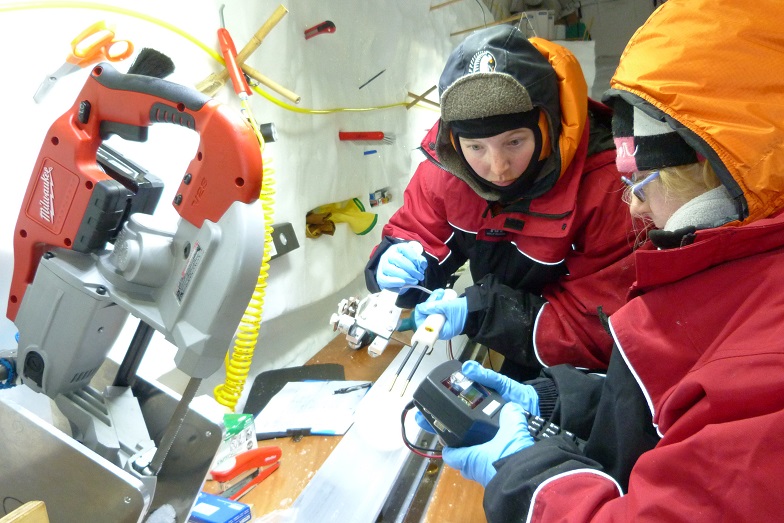Game changer for past climate-change research
With climate data from 650 locations worldwide covering the past 2,000 years at scientists' fingertips, the PAGES 2k database is set to boost research on global climate change. An initiative under Past Global Changes (PAGES), an international paleoscience platform hosted by the University of Bern, initial results indicate a long-term cooling trend until the 19th century, followed by a sharp warming trend.
Author: Faryal Mirza, International Relations Office

The PAGES 2k Network Temperature Database covers all continents and oceans across the world. It is the most comprehensive open data collection of its type with nearly 700 records from close to 650 locations around the world.
Past temperatures
The database is an important resource for climate researchers interested in how the climate has changed from 1 AD to the present. It uses proxy data, which provides indirect information on past temperatures. The records come from a number of sources. They include corals, ice-cores, sediment, speleothems - which are cave deposits or formations - documentary evidence and other archives.
Tree rings are also part of the dataset. They, for example, tend to grow thicker in warmer years, allowing climate scientists to estimate temperature change during the life of the tree. Data on tree rings from Western China are included.
“These high-quantity tree-ring chronologies are checked by dendroclimatologists, providing an opportunity to reconstruct the precipitation field in high resolution for the whole of China by also combining historical documents on Eastern China," says Shi Feng, associate professor at the Chinese Academy of Sciences’ Institute of Geology and Geophysics, Beijing, China.
Transformative collection
The database has been welcomed as a useful tool by scientists in the field.
It is “a transformative collection of essential proxy information from around the world”, according to Nathan Steiger, a postdoctoral research fellow at Columbia University’s Lamont-Doherty Earth Observatory.
Juan Jose Gómez-Navarro, a postdoctoral researcher at the University of Murcia, Spain, agrees.
"The PAGES 2k database is a great example of scientific collaboration that has led to a magnificent collection of proxies with an unprecedented spatial and temporal coverage,” he says.
“I am using it with other scientists from the PAGES 2k Network to combine the information it contains with climate models to gain further insight into the spatiotemporal climate variability of the last two millennia,” Gómez-Navarro adds.
The PAGES 2k Network was founded in 2006 with the goal of compiling and analyzing a global array of regional climate reconstructions for the last 2,000 years.
Beginnings
The international project to create the database was initiated by researchers at the University of Bern. Six climate experts were involved in collecting data, including several from the Southern Hemisphere.
“It was an important contribution on our part to bring in the South perspective to get a truly globally consistent result,” says Raphael Neukom, one of the project’s coordinators and co-authors.
20.09.18
PAGES
About
PAGES was established in 1991 to facilitate international research into understanding climatic and environmental dynamics by studying the past to help predict the future. The platform is funded jointly by the United States National Science Foundation and the Swiss Academy of Sciences with in-kind support from the University of Bern.
